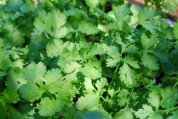2. Planting the Wrong Varieties
for Your Planting Zone
USDA Planting Zones are bands of similar temperature that stretch across the country. Planting zones share similar first and last frost dates, planting times, high and low temperatures, and length of growing season.

|

|

|
Planting zones are important for selecting fruit trees and perennial plants like blueberries. For example, if you try to plant lowbush blueberries in the south, they may grow, but they’ll fruit poorly if at all in the high temperatures. If you plant citrus trees or rosemary outside in the north, they’ll freeze and die.
Almost all vegetables are grown as annuals, in a single growing season. Knowing the length of the growing season is critical when choosing varieties for starting a vegetable garden. If you select long-season tomatoes or peppers that fruit at 100 days and you have an 85-day growing season, the plants will set fruit—but not ripen it—before frost kills them.
Consult the USDA Planting Zone Map to find out when your first and last frost date is.
When starting a vegetable garden, selecting vegetable varieties that are appropriate for your planting zone and growing season helps prevent a harvest of unripe fruit and frustration.
Back to Starting a Vegetable Garden
Top Ten Mistakes Beginning Gardeners Make:
Copyright © 2009-2025, by Steve Masley, Grow-it-Organically.com
All rights reserved
HOME | About Us | Contact Us | Privacy
New! Comments
Have a question or comment about what you just read? Leave me a comment in the box below.